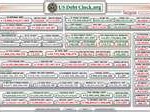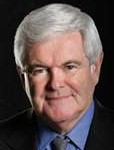 There has been much written about our President as to who he is, what he is and where he is taking us. In effort to answer those questions we provide the following information on the people that have been appointed to high positions in the Obama Administration.
There has been much written about our President as to who he is, what he is and where he is taking us. In effort to answer those questions we provide the following information on the people that have been appointed to high positions in the Obama Administration.
There is another more “detailed” version of the “Obama Czar List” that is being circulated as an Email forward. “Union of Americans” feels that some of the information contained in that version is of a questionable nature. “Union of Americans” policy is to verify the authenticity of any article we publish. We were not able to do so with the Email list. While attempting to verify it we did come across the “Obama Czar List” below. We are providing you with this version as it is from a reputable and trustworthy source, Glenn Beck.
It is a widely accepted fact that we know a man by the company he keeps. The report below, we think, is a must read for every American Patriot. You will find in this report the name and job descriptions of Obama’s “Czars”. Read who they are and you will realize what they are trying to do.
The best way to know a man is to know who he travels with and counts as a friend. ~ Editor
List of Obama’s Czars
(As of July 20, 2009)
• The Brainroom counts 32 czars in the Obama administration, based on media reports from reputable sources that have identified the official in question as a czar.
• In addition, President Obama has said that he will create the position of cyber czar, and there have been media reports that there could be a health insurance czar and a copyright czar. When and if those positions are filled, that would bring the total to 35.
• Since czar isn’t an official job title, the number is somewhat in the eye of the beholder.
NOTE: positions that also existed under previous administrations are indicated with an *.
1. Afghanistan Czar – Richard Holbrooke
Title: Special Representative for Afghanistan and Pakistan
Salary: unknown
Reports to: Secretary of State Hillary Clinton
Appointed: January 2009
Department that might have handled similar issues: State
• Will work with CENTCOM head Gen. David Petraeus to integrate U.S. civilian and military efforts in the region.
• 45 years of experience have made him a fixture of the Democrats’ foreign policy establishment.
• Was U.S. ambassador to U.N., 1999-2001
• Brokered the 1995 Dayton Peace Accords in Bosnia
• Also served as Assistant secretary of state, East Asia and the Pacific (1976 to 1980); worked in foreign service (1962 to 1976)
• From 1972 through 1976, was the editor of Foreign Policy magazine.
2. AIDS Czar * – Jeffrey Crowley
Title: Director of the Office of National AIDS Policy
Salary: $102,000
Reports to: President Obama (as part of the Executive Office of the President’s Domestic Policy Council)
Appointed: February 2009
Department that might have handled similar issues: Health and Human Services
• Coordinates HIV/AIDS policy domestically and internationally.
• Senior Research Scholar at Georgetown University’s Health Policy Institute and a Senior Scholar at the O’Neill Institute for National and Global Health Law, Georgetown University Law Center.
• Was Deputy Executive Director for Programs at the National Association of People with AIDS
• Has Master of Public Health from the Johns Hopkins University School of Hygiene and Public Health
3. Auto Recovery Czar – Ed Montgomery
Title: Director of Recovery for Auto Communities and Workers
Salary: unknown
Reports to: Larry Summers, the president’s top economic adviser, and Labor Secretary Hilda Solis
Appointed: March 2009
Department that might have handled similar issues: Labor
• Will work to leverage government resources to support the workers, communities and regions that rely on the American auto industry.
• Was Deputy Secretary and Chief Economist at the Labor Department (1997 to 1998)
• Is Dean of the College of Behavioral and Social Sciences at the University of Maryland (2003 to present)
• Has PhD in economics from Harvard
• In 2008, made $1,200 in political donations, all of which went to Obama’s presidential campaign.
• Wife is the granddaughter of a General Motors worker from Portland, Mich.
• Drives a 2000 Lincoln
4. Border Czar * – Alan Bersin
Title: Assistant Secretary for International Affairs and Special Representative for Border Affairs
Salary: unknown
Reports to: Homeland Security Secretary Janet Napolitano
Appointed: April 2009
Agencies that might have handled similar issues: Customs and Border Protection (CBP) and Immigration and Customs Enforcement (ICE)
• Will coordinate all of the department’s border security and law-enforcement efforts.
• Essentially had the same job under President Clinton; served as Attorney General Janet Reno’s special representative on border issues, a job that he held while retaining the position of U.S. attorney for San Diego.
• This time, boss will be Homeland Security Secretary Janet Napolitano, who will expect him to handle illegal immigration and drug violence issues along the Mexican-American border
• Previous experience: Chairman of the San Diego Regional Airport Authority (2006 to 2009); Secretary of Education for California (2005 to 2006); Superintendent of San Diego Public Schools (1998 to 2005); U.S. Attorney for San Diego (1993 to 1998)
• Graduate of Harvard and Yale Law School
• Talking about border security shortly before he was named Clinton border czar in 1995, said he wanted to focus on suspected smugglers of both drugs and people and was not interested in prosecuting “economic migrants.”
• Often tied to the 1994 border policy called “Operation Gatekeeper.” The policy shifted the U.S. focus from the arresting of immigrants who actually crossed the border to an increased border presence designed to stop border crossing in the first place. When Bersin left the position in 1998, border arrests were on pace for an 18-year low of just more than 200,000. Latino groups complained that Operation Gatekeeper was immoral, saying the program monitored the border near San Diego but simply forced illegal immigrants to other, more dangerous areas.
• Has given more than $50,000 to political campaigns since 1999, almost all of it to Democrats.
5. California Water Czar – David J. Hayes
Title: Deputy Interior Secretary
Salary: unknown
Reports to: Interior Secretary Ken Salazar
Appointed: June 2009
Confirmed by Senate (as Deputy Interior Security): May 20, 2009
Department that might have handled similar issues: Interior
• Charged with coordinating federal agencies to ease California’s water shortage
• Graduate of Stanford Law School; clerked for U.S. District Court for the D.C., has been a partner at two big D.C. law firms
• Was deputy interior secretary under Bruce Babbitt during Clinton administration
• From 1993 to 1995, was chairman of the board at the Environmental Law Institute, a non-profit research center.
• As a lobbyist, represented the Southern California Metropolitan Water District in 2001
• In August 2008, wrote a policy report while working at the Progressive Policy Institute accusing the Bush administration of leaving a “damaging legacy” in their natural resource management policies
• Donated $2,300 to Clinton during 2008 campaign; after she withdrew, donated $2,300 to Obama
6. Car Czar – Ron Bloom
NOTE: on July 13, 2009, Bloom took over as head of the Presidential Task Force on the Auto Industry, replacing Steven Rattner
Title: Counselor to the Secretary of the Treasury
Salary: unknown
Reports to: Treasury Secretary Timothy Geithner and National Economic Council head Larry Summers
Appointed: July 2009
Department that might have handled similar issues: Treasury
• A leader of the White House task force overseeing auto company bailouts; worked on restructuring of General Motors and Chrysler LLC.
• Was special assistant to president of the United Steelworkers union from 1996-Feb 2009
• Has negotiated restructuring deals for more than 50 companies, getting major concessions from unions and companies.
• Was raised in New York in a pro-union family, which included a schoolteacher mother and unionized relatives.
• After working for the Service Employees International Union, got an MBA from Harvard University because he thought unions lacked business smarts, he said in a 1996 interview in the Pittsburgh Post-Gazette.
• From 1985 to 1990, he worked as an investment banker with Lazard Freres & Co., which specializes in mergers, acquisitions and corporate restructuring, before co-founding the investment-banking firm Keilin and Bloom.
7. Central Region Czar – Dennis Ross
Title: Special Assistant to the President and Senior Director for the Central Region (encompasses the Middle East, the Gulf, Afghanistan, Pakistan and South Asia)
Salary: unknown
Reports to: National Security Adviser Gen. James L. Jones
Appointed: June 2009
Department that might have handled similar issues: State
• Spent 12 years in the George H.W. Bush and Clinton administrations trying to create a permanent agreement between the governments of Israel and the Palestinian territories
• In 1981, was named to President Ronald Reagan’s national security staff as the director of Near East and South Asian Affairs.
• Was director of the State Department’s Policy Planning office during President George H. W. Bush’s term.
• 1993: appointed to the position of Middle East coordinator, making him the top negotiator for peace between Israel and Palestinian territories
• After he left government in 2000, headed up Washington Institute for Near East Policy, a hawkish think tank with a pro-Israeli bent
8. Climate Czar – Todd Stern
Title: Special Envoy for Climate Change
Salary: unknown
Reports to: Secretary of State Hillary Clinton
Appointed: January 2009
Agency or department that might have handled similar issues: Environmental Protection Agency; State
• Responsible for developing international approaches to reduce the emission of greenhouse gases.
• Served in the Clinton White House from 1993 to 1999; Was Head of the Initiative on Global Climate Change (1997 to 1999) and Adviser to the Secretary of the Treasury (1999 to 2001)
• As a top aide to President Clinton, helped negotiate the Kyoto and Buenos Aires climate pacts, both of which fell apart partially because of a lack of U.S. support during Bush administration.
• After Bush was elected to office, went to the Wilmer Hale law firm, where he is a partner in the regulatory and government affairs division.
• Was most recently a Senior Fellow at the Center for American Progress, where he focused on climate change and environmental issues.
• Has written extensively on climate change, and has called on the American government and the international community to take a series of steps to reduce the emission of greenhouse gases.
• Supports a national cap-and-trade system that would limit carbon emissions and reduce U.S. dependency on foreign oil
• Has law degree from Harvard
9. Domestic Violence Czar – Lynn Rosenthal
Title: White House adviser on Violence Against Women
Salary: unknown
Reports to: President Obama and Vice President Biden
Appointed: June 2009
Department that might have handled similar issues: Health and Human Services
• Will advise the President and Vice President on domestic violence and sexual assault issues.
• 2000-2006: served as the Executive Director of the National Network to End Domestic Violence
• Was an advocate for the reauthorization of the Violence Against Women Act in 2000 and 2005 and has assisted states and local communities with implementation of this federal legislation
• Was director of the Florida Coalition Against Domestic Violence
10. Drug Czar * – Gil Kerlikowske
Title: Director of the Office of National Drug Control Policy
Salary: unknown
Reports to: President Obama
Appointed: March 2009
Confirmed by Senate: May 7, 2009
Department that might have handled similar issues: Justice
• Directs drug-control policy in the U.S.; is expected to shift drug policy to intervention, treatment and a reduction of problem drug use.
• Was police chief for the city of Seattle from 2000-2009
• Was Deputy Director of the Department of Justice’s Office of Community Oriented Policing Services (1998 to 2000); Police Chief for the city of Buffalo (1994 to 1998); Police chief of Fort Pierce, Fla. (N/A to 1994)
• A strong gun-control advocate, urged both the Washington legislature and the U.S. Congress to pass an assault-weapons ban and has worked to close the loophole that doesn’t require background checks at gun shows
• 2003: admitted that busting people for personal marijuana possession was not a top priority of the Seattle police department.
• As Seattle police chief, assigned an officer full-time to the drug court, which commuted sentences of drug users who complete medical treatment in lieu of going to jail.
11. Economic Czar * – Paul Volcker
Title: Chairman of the President’s Economic Recovery Advisory Board
Salary: Volcker reportedly isn’t paid for his advice.
Reports to: President Obama
Appointed: January 2009
Department that might have handled similar issues: Treasury
• Charged with offering independent, nonpartisan information, analysis, and advice to the President as he formulates and implements his plans for economic recovery.
• Some reports say he’s been marginalized by Larry Summers.
• Former Federal Reserve chairman (1979-1987)
• Was Undersecretary for Monetary Affairs, Department of the Treasury (1969 to 1974); Deputy Undersecretary for Monetary Affairs, Department of the Treasury (1963 to 1965)
• Gave Obama campaign $2,300 in 2008.
12. Energy and Environment Czar – Carol Browner
Title: Assistant to the President for Energy and Climate Change
Salary: $172,200
Reports to: President Obama
Appointed: January 2009
Agency that might have handled similar issues: EPA
• Coordinates energy and climate policy, emphasizing regulation and conservation.
• Was Environmental Protection Agency administrator in the Clinton administration (1993-2000)
• Was Florida Secretary of the Environment (1991 to 1993)
• Founded and continues to serve as a principal of The Albright Group LLC, a global strategy firm led by former Secretary of State Madeleine Albright. Also a principal of Albright Capital Management, an investment advisory firm that concentrates on emerging markets.
• Worked on the Socialist International’s Commission for a Sustainable World Society, which argues that the global community must work collectively to address environmental policies
• Described Bush administration as the “worst environmental administration ever”
• While orchestrating private discussions between the White House and auto industry officials on vehicle fuel efficiency standards, kept the talks as quiet as possible. Mary Nichols, the head of the California Air Resources Board, said, “We put nothing in writing, ever.”
• 2003: A federal judge held the Environmental Protection Agency in contempt for destroying computer files during the Clinton administration that had been sought by a conservative legal foundation. U.S. District Judge Royce Lamberth also ordered the EPA to pay the Landmark Legal Foundation’s legal fees and costs because the agency disobeyed his order to preserve the electronic records of Browner, the former EPA chief.
13. Faith-Based Czar * – Joshua DuBois
Title: Director of the Office of Faith Based and Neighborhood Partnerships
Salary: $98,000
Reports to: President Obama
Appointed: February 2009
Department that might have handled similar issues: Health and Human Services
• Acts as a liaison between faith and secular community groups and the White House, often partnering with them to tackle social issues. Helps these groups apply for federal grants available to them.
• Is 26 years old
• Has master’s in public affairs from Princeton University; served as associate pastor
• Worked for Rep. Rush Holt (D-N.J.) as an intern and then as a fellow for Rep. Charles B. Rangel (DN. Y.).
• Hired as a legislative correspondent in Obama’s Senate office in May 2005
• In 2008, at the age of 25, was appointed director of religious affairs for the Obama campaign.
14. Government Performance Czar – Jeffrey Zients
Title: Chief Performance Officer
Salary: unknown
Reports to: Office of Management and Budget Director Peter Orzag
Appointed: April 2009
Confirmed by the Senate (as deputy director for management for the OMB): June 19, 2009
Agency that might have handled similar issues: OMB
• Charged with cutting costs and finding best practices throughout government.
• Has never worked in government before
• Was a chief executive and former management consultant
• Was founder of Portfolio Logic (2004 to present); Partner of the Washington Baseball Club (2004 to 2006); CEO of the Advisory Board (1998 to 2004)
• Has donated just over $90,000 to political campaigns since 1999, almost all of which went to Democratic candidates
15. Great Lakes Czar – Cameron Davis
Title: Special advisor to the U.S. EPA overseeing its Great Lakes restoration plan
Salary: unknown
Reports to: Environmental Protection Agency Administrator Lisa Jackson
Appointed: June 2009
Agency that might have handled similar issues: Environmental Protection Agency
• Oversees the administration’s initiative to restore the Great Lakes’ environment.
• President of the Chicago-based environmentalist group Alliance for the Great Lakes
• Was a litigating attorney and served as an adjunct clinical assistant professor of law at the University of Michigan Law School.
• Served with the United Nations Environment Program in Nairobi, Kenya, where he worked on the Montreal Protocol to protect the Earth’s ozone layer, and U.S. EPA’s Office of Regional Counsel in Chicago.
16. Green Jobs Czar – Van Jones
Title: Special Adviser for Green Jobs, Enterprise and Innovation at the White House Council on Environmental Quality
Salary: unknown
Reports to: Head of Council on Environmental Quality Nancy Sutley
Appointed: March 2009
Agency or department that might have handled similar issues: Environmental Protection Agency; Labor
• Will focus on environmentally-friendly employment within the administration and boost support for the idea nationwide
• Rose from near obscurity in the Oakland, Calif., grassroots organizing scene to the leader of a national movement to spur the green economy.
• Founded Green For All, an organization focused on creating green jobs in impoverished areas
• Also co-founder of the Ella Baker Center for Human Rights and Color of Change, which includes Bay Area PoliceWatch, a group devoted to “protect[ing] the community from police misconduct”
• Published New York Times best-seller The Green Collar Economy: How One Solution Can Fix Our Two Biggest Problems, in October 2008
• Started career as a prison-reform advocate in Oakland, Calif., lobbying for reform of the juvenile justice system and youth-violence prevention programs
• Has law degree from Yale
• 2007: worked on the Green Jobs Act with then-Rep. Hilda Solis (D-Calif.), who co-sponsored the bill in the House
• 1993: was arrested at the Los Angeles riots that followed the acquittal of cops in the Rodney King beating. “I was arrested simply for being a police observer,” says Jones, who had just graduated from Yale Law School and was working with the Lawyer’s Committee for Civil Rights in San Francisco.
• 1999: was arrested in the 1999 Seattle protests against the World Trade Organization
• Excerpt from a Nov. 2005 interview in the East Bay Express:
Jones had planned to move to Washington, DC, and had already landed a job and an apartment there. But in jail, he said, “I met all these young radical people of color — I mean really radical, communists and anarchists. And it was, like, ‘This is what I need to be a part of.'” Although he already had a plane ticket, he decided to stay in San Francisco. “I spent the next ten years of my life working with a lot of those people I met in jail, trying to be a revolutionary.” In the months that followed, he let go of any lingering thoughts that he might fit in with the status quo. “I was a rowdy nationalist on April 28th, and then the verdicts came down on April 29th,” he said. “By August, I was a communist.” In 1994, the young activists formed a socialist collective, Standing Together to Organize a Revolutionary Movement, or STORM, which held study groups on the theories of Marx and Lenin and dreamed of a multiracial socialist utopia. They protested police brutality and got arrested for crashing through police barricades. In 1996, Jones decided to launch his own operation, which he named the Ella Baker Center after an unsung hero of the civil-rights movement.
17. Guantanamo Closure Czar – Daniel Fried
Title: Special envoy to oversee the closure of the detention center at Guantanamo Bay
Salary: unknown
Reports to: Secretary of State Hillary Rodham Clinton
Appointed: March 2009
Department that might have handled similar issues: Justice; State
• Works to get help of foreign governments in moving toward closure of Guantanamo Bay, in fulfillment of Obama’s promise to close the prison within a year of taking office.
• Was Assistant Secretary of State for Europe and Eurasian Affairs, State Department (2005 to 2009); Director for European and Eurasian Affairs, State Department (2001 to 2005); U.S. Ambassador to Poland (1997 to 2001)
18. Health Czar * – Nancy-Ann DeParle
Title: Counselor to the President and Director of the White House Office of Health Reform
Salary: $158,500
Reports to: President Obama
Appointed: March 2009
Department that might have handled similar issues: Health and Human Services (HHS)
• Coordinates the development of the Administration’s healthcare policy agenda.
• Experience: Managing Director, CCMP Capital (since 2001); Adjunct professor (focusing on healthcare policy), Wharton School of Business (since 2001); Commissioner, Medicare Payment Advisory Commission (since 2001); Fellow, Harvard Institue of Politics (2000 to 2001); Director, Healthcare Financing Administration (1997 to 2000)
• Has law degree from Harvard
• Served as the OMB’s representative on health-care reform during Bill Clinton’s first term
• As head of the HHS Health Care Financing Administration under Clinton, ran the largest health insurance provider in America, overseeing $600 billion in payments annually to 74 million recipients of Medicare and Medicaid
• 2001: left government to take a year-long fellowship at Harvard’s Institute of Politics, where she was part of Harvard’s Health Care Policy Forum and led a weekly study group on reforming Medicare.
• During Bush administration, sat on the boards of many health companies, from medical treatment producers to hospital systems
• In September 2008, donated $2,300 each to Clinton and Barack Obama.
19. Information Czar – Vivek Kundra
Title: Federal Chief Information Officer
Salary: unknown
Reports to: Director of the Office of Management and Budget Peter Orszag
Appointed: March 2009
Agencies that might have handled similar issues: other federal agency CIOs
• Basically in charge of overseeing other federal agency CIOs and for setting technology policy across the government.
• Head of a federal technology budget that amounts to $71 billion annually
• Operation is housed in the Office of Management and Budget (OMB) and will likely have authority to question how money in departmental technology budgets is used
• Formerly head of the District of Columbia’s technology operations
• Shortly after he joined the OMB, federal authorities raided his old District government office. They arrested two technology office managers and a subcontractor, charging them with a bribery scheme that allegedly defrauded the city out of at least $500,000. Kundra was not a suspect in the case, the U.S. Attorney’s office said.
• Has a masters from Maryland in information technology.
• Experience: Washington, D.C. Chief Technology Officer (2007 to 2009); State of Virginia’s Assistant Secretary of Commerce and Trade (2006 to 2007); CEO of computer security firm Creostar
20. Intelligence Czar * – Dennis Blair
Title: Director of National Intelligence
Salary: $197,700
Reports to: President Obama
Appointed: January 2009
Confirmed by Senate: January 28, 2009
Agency that might have handled similar issues: CIA
• Nation’s top intelligence official.
• Retired four-star admiral.
• Graduate of the United States Naval Academy, 1968; sixth-generation naval officer
• Lacks professional roots in the world of intelligence
• Held a number of prestigious Washington posts, including the Pentagon’s top liaison to the CIA and director of the Joint Staff.
• Ran the non-profit Institute for Defense Analyses (IDA), which focuses primarily on issues related to national security, and does a lot of work for the Defense Department. Left IDA under a cloud of controversy in mid-2006.
21. Mideast Peace Czar – George Mitchell
Title: Special Envoy for Middle East Peace
Salary: unknown
Reports to: Secretary of State Hillary Rodham Clinton
Appointed: January 2009
Department that might have handled similar issues: State
• Works to maintain the shaky peace between Israel and Hamas after recent hostilities
• Senate majority leader from 1989 to 1994
• Was special envoy to Northern Ireland during the Clinton administration and lead investigator into steroid use in Major League Baseball.
• 2000: led a fact-finding committee to study violence in the Middle East; 2001’s Mitchell Report formed the basis for the road map for Middle East peace
22. Pay Czar – Kenneth R. Feinberg
Title: Special Master on executive pay
Salary: reportedly receiving no compensation for his work.
Reports to: Treasury Secretary Timothy Geithner
Appointed: June 2009
Department that might have handled similar issues: Treasury
• Named to examine compensation practices at companies that have been bailed out more than once by the federal government
• Oversaw the payouts to the families of the victims of the Sept. 11, 2001, attacks
• Was the chief administrator to the Hokie Spirit Memorial Fund, which commemorates the students who died in the April 2007 shooting rampage at Virginia Tech
• Founder and managing partner of Feinberg Rozen LLP (1992 to present), law firm specializing in mediation
• Was Chief of staff for Sen. Edward Kennedy (1978 to 1980)
• While working with the Feinberg Group, donated over $150,000, nearly all of which has gone to Democratic candidates and political action committees. In 2007, donated $2,300 to 2008 presidential candidate Rudolph Giuliani (R).
23. Regulatory Czar – Cass R. Sunstein *
Title: Administrator of the White House Office of Information and Regulatory Affairs
Salary: unknown
Reports to: Office of Management and Budget head Peter Orszag
Appointed: January 2009
Nomination was sent to Senate on April 20, 2009 – no action yet taken
Agency that might have handled similar issues: OMB
• Will be responsible for reviewing draft regulations and assessing their costs and benefits
• Is a Harvard Law School professor; prior to that, was a professor at the Univ. of Chicago Law School (1981-2008)
• Academic specialties: constitutional law, administrative law, and regulatory policy
• Obama: “Cass is not only a valued advisor, he is a dear friend”
• Known for advancing a field called “law and behavioral economics” that seeks to shape law and policy around the way research shows people actually behave; though embraced by conservatives, critics say it fails to account for the sometimes less-than-rational aspects of human behavior.
• In his 2002 book, Republic.com, discussed the drawbacks of limitless choices on the Internet that allow people to seek out only like-minded people and opinions that merely fortify their own views; he talked about the idea of the government requiring sites to link to opposing views. He later came to realize it was a “bad idea.”
• In his 2004 book, Animal Rights, suggested that animals ought to be able to bring suit, with private citizens acting as their representatives, to ensure that animals are not treated in a way that violates current law.
• In a 2007 speech at Harvard he called for banning hunting in the U.S.
• The American Conservative Union started a website, Stop Sunstein, in an effort to keep him out of the White House.
24. Science Czar – John Holdren
Title: Assistant to the President for Science and Technology, Director of the White House Office of Science and Technology Policy, and Co-Chair of the President’s Council of Advisers on Science and Technology
Salary: unknown
Reports to: President Obama
Appointed: December 2008
Confirmed by Senate: March 19, 2009
Agency or department that might have handled similar issues: Energy
• Top adviser to Obama on science and technology, issues that are increasingly relevant to other issues such as homeland security, energy and environmentalism
• Teresa and John Heinz Professor of Environmental Policy and Director, Program in Science, Technology, and Public Policy at Harvard University’s Kennedy School of Government (1996-2009); Harvard University Professor of Environmental Science and Public Policy (1996-2009); University of California, Berkeley Professor of Energy and Resources Emeritus (1996 to present)
• Studied aerospace engineering and plasma physics at the Massachusetts Institute of Technology — where he earned his BS and MS — and Stanford University, where he received his doctorate in 1970
• Is an outspoken advocate of the need to reduce greenhouse gas emissions and believes the United States should sign the Comprehensive Nuclear Test-Ban Treaty.
• In a 2008 New York Times op-ed, Holdren called climate change skeptics “dangerous” members of a “denier fringe.”
• In 1971, co-authored a paper in Global Ecology suggesting “some form of ecocatastrophe, if not thermonuclear war, seems almost certain to overtake us before the end of the century.”
• Some conservative media outlets have called attention to a book Holdren co-authored in 1977 titled Ecoscience: Population, Resources, and Environment. The book reportedly includes this statement: “population-control laws, even including laws requiring compulsory abortion, could be sustained under the existing Constitution.” Holdren’s office says he “does not now and never has been an advocate of compulsory abortions or other repressive measures to limit fertility.”
25. Stimulus Accountability Czar – Earl Devaney
Title: Chair of the Recovery Act Transparency and Accountability Board
Salary: unknown
Reports to: Vice President Biden
Appointed: February 2009
Agency that might have handled similar issues: OMB
• Leads oversight board that monitors money spent by the stimulus package
• Experience: Inspector General at the Interior Department (1999 to present); Director of criminal enforcement at the Environmental Protection Agency (1991 to 1999); Special Agent at the Secret Service (1970 to 1991)
• During his tenure at Interior, uncovered the shady dealings of disgraced ex-lobbyist Jack Abramoff, an investigation that eventually led to Abramoff’s imprisonment and the resignation of Interior’s no. 2, J. Steven Griles, for lying under oath about his own role in the scandal.
• On July 8, 2009, the U.S. General Services Administration issued a press release announcing an $18 million contract for a new recovery.gov web site, which quoted Devaney as saying, “We are pleased that another major milestone has been achieved.”
26. Sudan Czar – J. Scott Gration
Title: Special Envoy to Sudan
Salary: unknown
Reports to: Secretary of State Hillary Clinton
Appointed: March 2009
Department that might have handled similar issues: State
• Will coordinate U.S. role in the aftermath of the genocide in Darfur
• Experience: Supreme Allied Command, NATO (2004 to 2005); Air Force assistant deputy undersecretary for international affairs (2003 to 2004)
• Commanded all air operations during the Iraq war in 2003
• 2006: left Air Force position to join Obama’s staff after traveling to Africa with the then-Senator from Illinois, even though he was a Republican
• Has won a Bronze Star, a Purple Heart, a Defense Superior Service Medal and 16 other awards
• Is a fluent Swahili speaker who grew up in the Congo
• Has called on the Obama administration to incentivize participation by the Sudanese government in peace talks by lifting sanctions, a position that is controversial. Also worked to position himself as the principal negotiator between the Sudanese government and its adversaries in Darfur, and is planning an international conference for September 2009
• Has M.A. in security studies from Georgetown
27. TARP Czar – Herb AllisonTitle: Assistant Secretary of the Treasury for Financial Stability
Salary: unknown
Reports to: Treasury Secretary Timothy Geithner
Appointed: June 2009
Department that might have handled similar issues: Treasury
• Leads the government’s $700 billion financial rescue program in the office of financial stability
• Veteran Wall Street banker and interim head of the mortgage-finance company Fannie Mae
• Worked at Merrill Lynch for 28 years, reaching position of president and COO
• Was CEO of Teachers Insurance and Annuity Association College Retirement Equities Fund (2002 to 2008); CEO of the Alliance for Lifelong Learning (2000 to 2002)
• Has undergraduate degree from Yale and MBA from Stanford
• 2000: was John McCain’s 2000 presidential campaign finance chairman
• In 2008, donated $2,300 to Obama’s presidential campaign
28. Technology Czar – Aneesh Chopra
Title: Chief Technology Officer
Salary: unknown
Reports to: President Obama
Appointed: April 2009
Confirmed by Senate: May 21, 2009
Department that might have handled similar issues: Commerce
• Will lead in the effort to eliminate wasteful government programs
• Will probably work to increase broadband access nationwide and computerize medical records
• Was Virginia’s secretary of technology (2005-2009)
• Has degree in public health from Johns Hopkins, Master’s from Harvard in public policy
• Worked at Morgan Stanley as investment banker; also worked at Advisory Board, a health-care research and consultancy firm
• Has donated more than $24,000 since 1997 to various campaigns. With the exception of a $1,000 donation to Louisiana Gov. Bobby Jindal (R) in 2004, all of Chopra’s contributions have gone to Democrats. From 2007 to 2008, Chopra donated $2,750 to Obama’s presidential campaign.
29. Terrorism Czar – John Brennan
Title: Assistant to the President for Homeland Security and Counterterrorism
Salary: $172,200
Reports to: National Security Adviser James L. Jones
Appointed: January 2009
Department that might have handled similar issues: Homeland Security
• Under Obama’s plan the homeland security adviser’s office would be eliminated, and the National Security Council would take over those duties. Brennan would be responsible for guarding against natural disasters and terrorism.
• Has called for increased integration between the Departments of Commerce, State and Defense
• Graduated from Fordham University in 1977 after a year of intensive Arabic and Middle Eastern studies in Cairo. Earned his J.D. from the University of Texas at Austin before joining the CIA as an intelligence director in 1980.
• Is a CIA veteran and fluent Arabic speaker
• Was CIA deputy executive director (2001 to 2003) and National Counter-Terrorism Center, Chair (2004 to 2005)
• Worked at Analysis Corp, (2005 to 2008);
• Staunch supporter of the Foreign Intelligence Surveillance Program; defended the use of extraordinary rendition, saying it is “an absolutely vital tool.”
30. Urban Affairs Czar – Adolfo Carrion Jr.
Title: White House Director of Urban Affairs
Salary: $158,500
Reports to: President Obama
Appointed: February 2009
Department that might have handled similar issues: Housing and Urban Development
• Job entails coordinating transportation and housing initiatives, as well as serving as a conduit for federal aid to economically hard-hit cities.
• Has undergraduate degree in world religions from Kings College; became an associate pastor at a Bronx church; earned his master’s degree in urban planning from Hunter College
• Was Bronx Borough President (2001-2009); President of the National Association of Latino Elected Officials (since 2007); City Council member (1998 to 2000)
• Many reporters say he has higher ambitions and will probably run for New York City mayor in the next ten years.
• Was an active campaigner for Obama, travelling across the country to speak on his behalf. He focused particularly on states with large Hispanic populations.
• The NY Daily News reported numerous developers made tens of thousands of dollars in campaign donations to Carrión around the same time he was considering approving their projects in the Bronx.
31. Weapons Czar – Ashton Carter
Title: Under Secretary of Defense for Acquisition, Technology, and Logistics
Salary: unknown
Reports to: Defense Secretary Robert Gates
Appointed: April 2009
Confirmed by Senate: April 23, 2009
Department that might have handled similar issues: Defense
• Will coordinate the Pentagon’s acquisitions, technology and logistics for weapons.
• Will oversee a weapons-buying system that Obama has placed at the top of his list of federal programs he wants to fix and will be asked to quickly weigh in on difficult decisions concerning at least 10 major defense programs, while also instantly dissecting the procurement system’s ailments so he can advise the administration on its Pentagon acquisition reform agenda
• Is a physicist and Harvard academic whose only previous Pentagon stint was in a mid-level policy post from 1993 until 1996 under the Clinton administration
• Graduated from Yale summa cum laude; studied at Oxford University as a Rhodes scholar and earned a doctorate in theoretical physics.
• Chair of Harvard’s International Relations, Science & Security Area International Security Program within the Belfer Center for Science and International Affairs; Assistant Secretary of Defense for International Security Policy (1993 to 1996); Director of the Center for Science and International Affairs at Harvard University’s Kennedy School (early 1990s)
• Has donated primarily to Democratic politicians since 2000. He donated $6,900 to then-Sen. Hillary Rodham Clinton (D-N.Y.) in 2007 and 2008. He gave the same amount to then Sen. Barack Obama (D-Ill.) during that same span.
32. WMD Policy Czar – Gary Samore
Title: White House Coordinator for Weapons of Mass Destruction, Security and Arms Control
Salary: unknown
Reports to: National Security Advisor Gen. James L. Jones
Appointed: January 2009
Department or agency that might have handled similar issues: NSC; Defense; State
• Will coordinate issues related to weapons of mass destruction across the government. His portfolio includes proliferation, nuclear and conventional arms control, threat reduction, and terrorism involving weapons of mass destruction.
• Position sits within the National Security Council.
• Is a veteran arms control negotiator.
• B.A. in sociology from the State University of New York at Stony Brook and his PhD in government from Harvard University in 1984.
• After brief stints with the Lawrence Livermore National Laboratory and the RAND Corporation, joined the State Department during the Reagan administration in 1987. Held several positions there, including director of the Office of Regional Non-proliferation Affairs; special assistant to the Ambassador-at-Large for Non-proliferation and Nuclear Energy Policy; and deputy to Ambassador-at-Large for Korean Affairs Robert Gallucci. Helped to negotiate the 1994 U.S.-North Korea Framework Treaty
• Joined the Clinton administration’s National Security Council in 1995 as an adviser on nonproliferation. Coordinated U.S. policy on nuclear, chemical and biological weapons.
• Was Director, Council on Foreign Relations (2006 to 2009); Vice President for Global Security and Sustainability, John D. and Catherine T. MacArthur Foundation (2005); Researcher, International Institute of Strategic Studies (2001 to 2005)












